How does metal music fit into EDM? “When it’s done well, it always works”
DJ Sullivan King is joining Avenged Sevenfold on an upcoming tour, while Dirtyphonics are using metal music production techniques to make drum ‘n’ bass — here’s why.
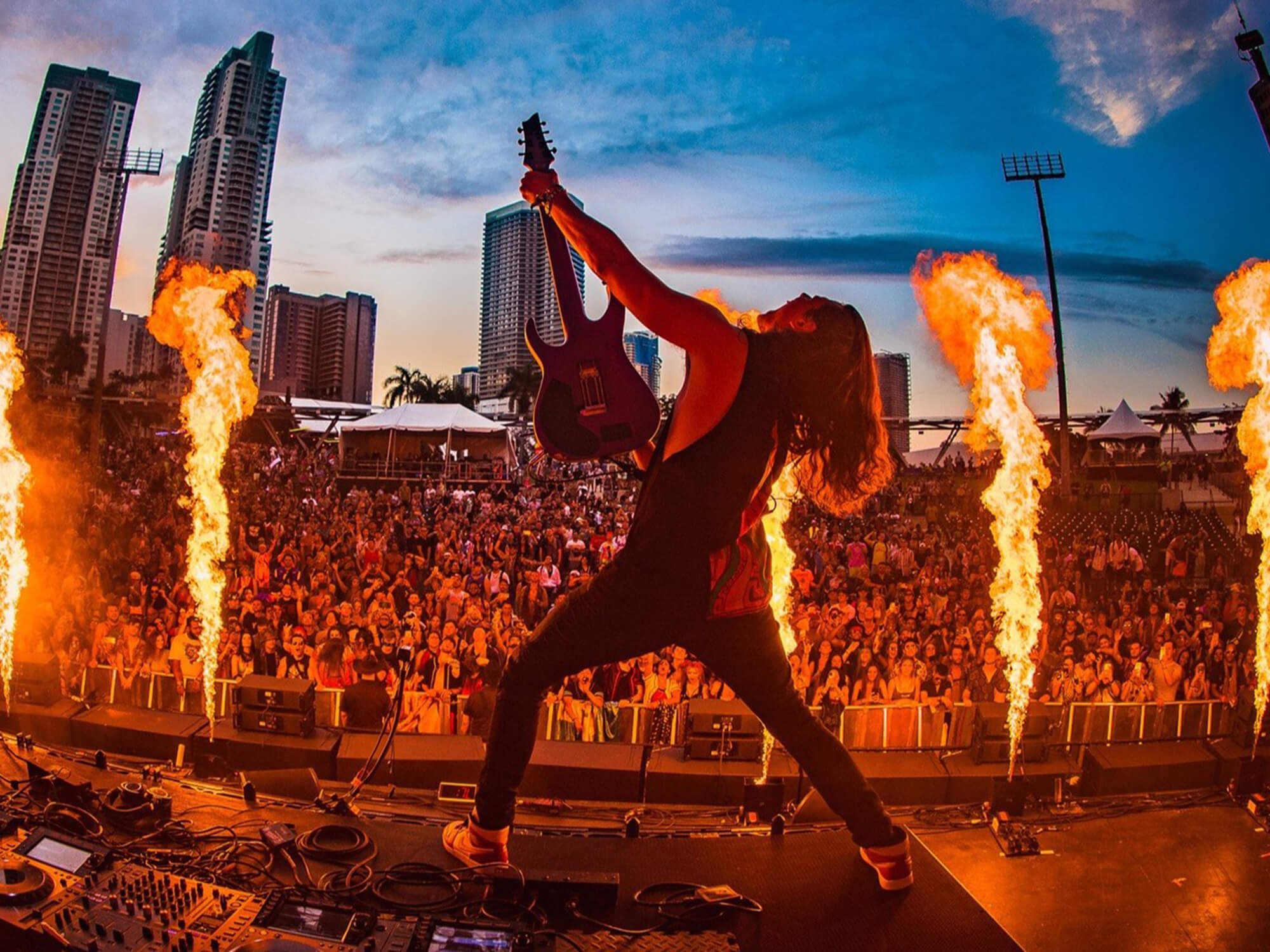
Sullivan King at Ultra Miami
Heavy metal fans around the world rejoiced in 2023 when Avenged Sevenfold (A7X) released their first album since 2016, Life Is But a Dream…
Then, when A7X announced the third leg of their tour in support of the new album in November, electronic fans rejoiced, too, when they saw that American DJ Sullivan King would serve as one of the supporting acts.
- READ MORE: Back to school with Dillon Francis: Why a maturing music career still needs class clown antics
Sullivan King, whose real name is Keaton Prescott, has carved a niche in the modern electronic scene by combining his guitar skills and screaming vocals with fiery dubstep. To him, this tour proves that, in fact, life is but a dream.
“It’s fucking crazy, man. It doesn’t make any fucking sense to me. I’m a dubstep artist who screams and plays guitar, and I’m gonna go out with one of the best metal bands of all time — especially my generation. They were a massive inspiration to me. I play Schecter guitars because they’re Schecter players,” Prescott says over Zoom, as he motions to the dozen or so Schecter guitars hanging behind him in his home studio.
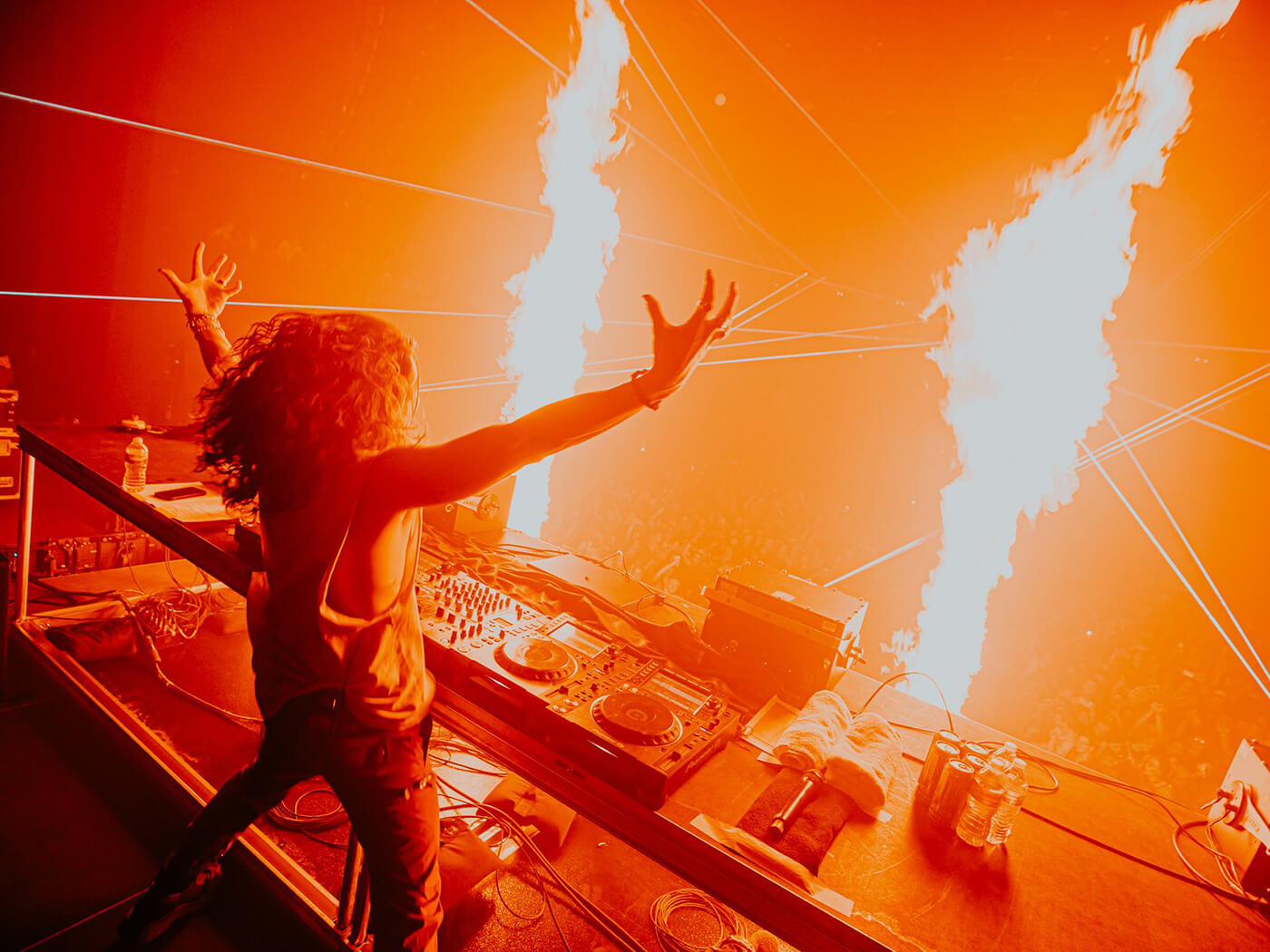
The idea of an electronic artist joining a metal band on tour may seem unconventional but, in 2023, Prescott is one of many artists who are combining metal and electronic music in their production processes.
Prescott has collaborated with numerous vocalists from rock and metal bands including Papa Roach, Brandon Saller of Atreyu, and Spencer Charnas of Ice Nine Kills.
Other acts like the French electronic duo, Dirtyphonics, have been incorporating metal instrumentation into their productions for years. Another group called HEX is spearheading a newer phenomenon known as techno metal. The founders of the project — Lorenzo Raganzini and Paolo Ferrara — perform live-hybrid sets with high-speed distorted guitar sounds running over four-on-the-floor beats.
With so many different versions of this genre combination finding dedicated audiences, their similarities go beyond novelty. Prescott sees a connective tissue from two perspectives. The first is dynamics:
“[Electronic and metal songs] are as loud as you can push them. We’re just slamming the shit out of the songs,” Prescott says. “In fact, most of the time, electronic music is a lot louder than traditional metal.”
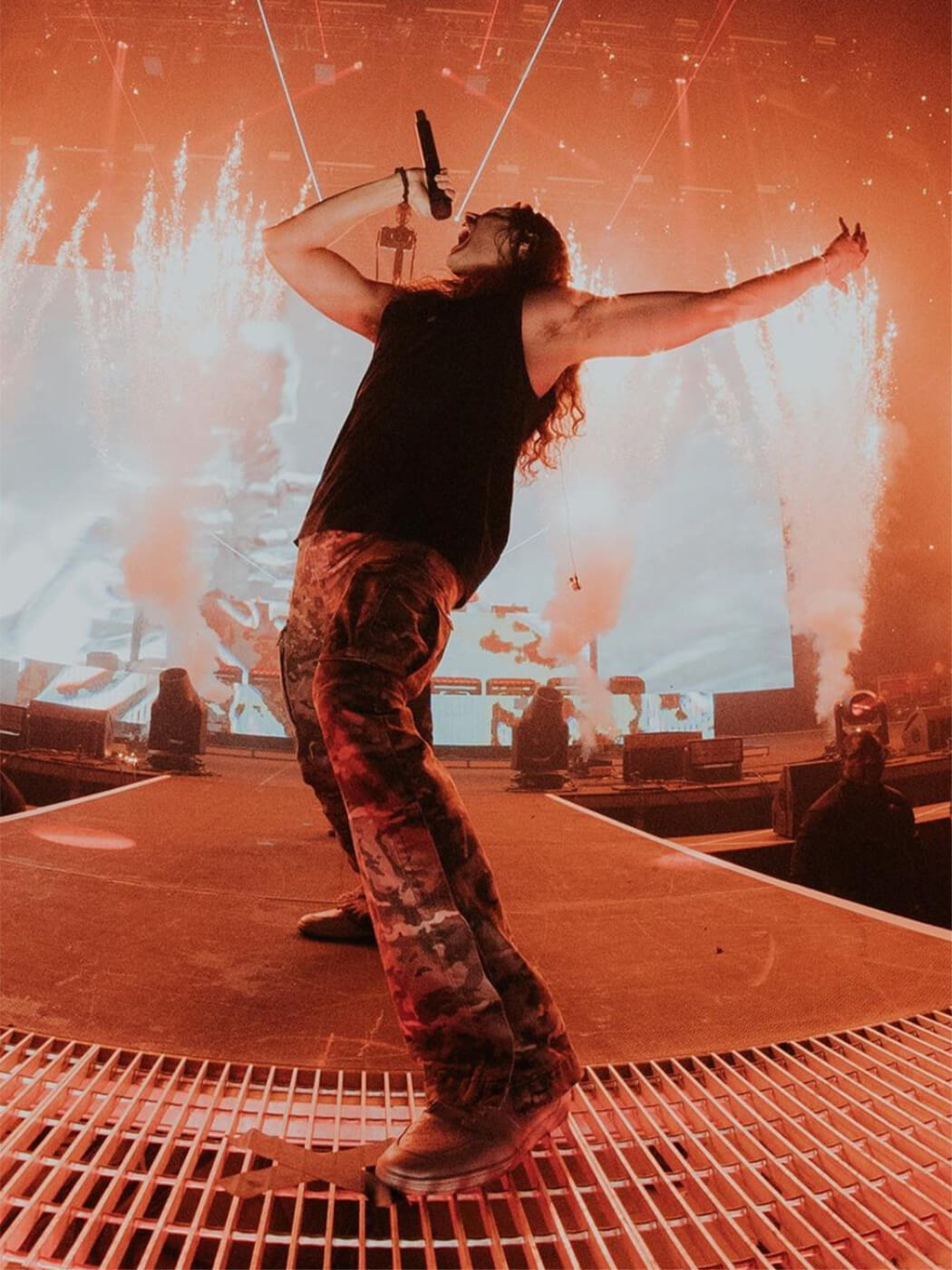
The second side pertains to the emotional intentions of the genres that come together first and foremost in the live space.
“In a live aspect, [electronic music and metal] convey the same emotion. Getting your aggression out in a positive way, or getting to be as loud as you want to be without feeling that you have to restrain from it,” Prescott says.
Referring to the live space, mosh pits at electronic gigs are now commonplace. They happen most frequently among heavier genres like drum ‘n’ bass and dubstep, but they’re starting to occur at house and EDM events as well.
Beyond the live space, the metal aesthetic permeates electronic music even if there isn’t any overlap in sound.
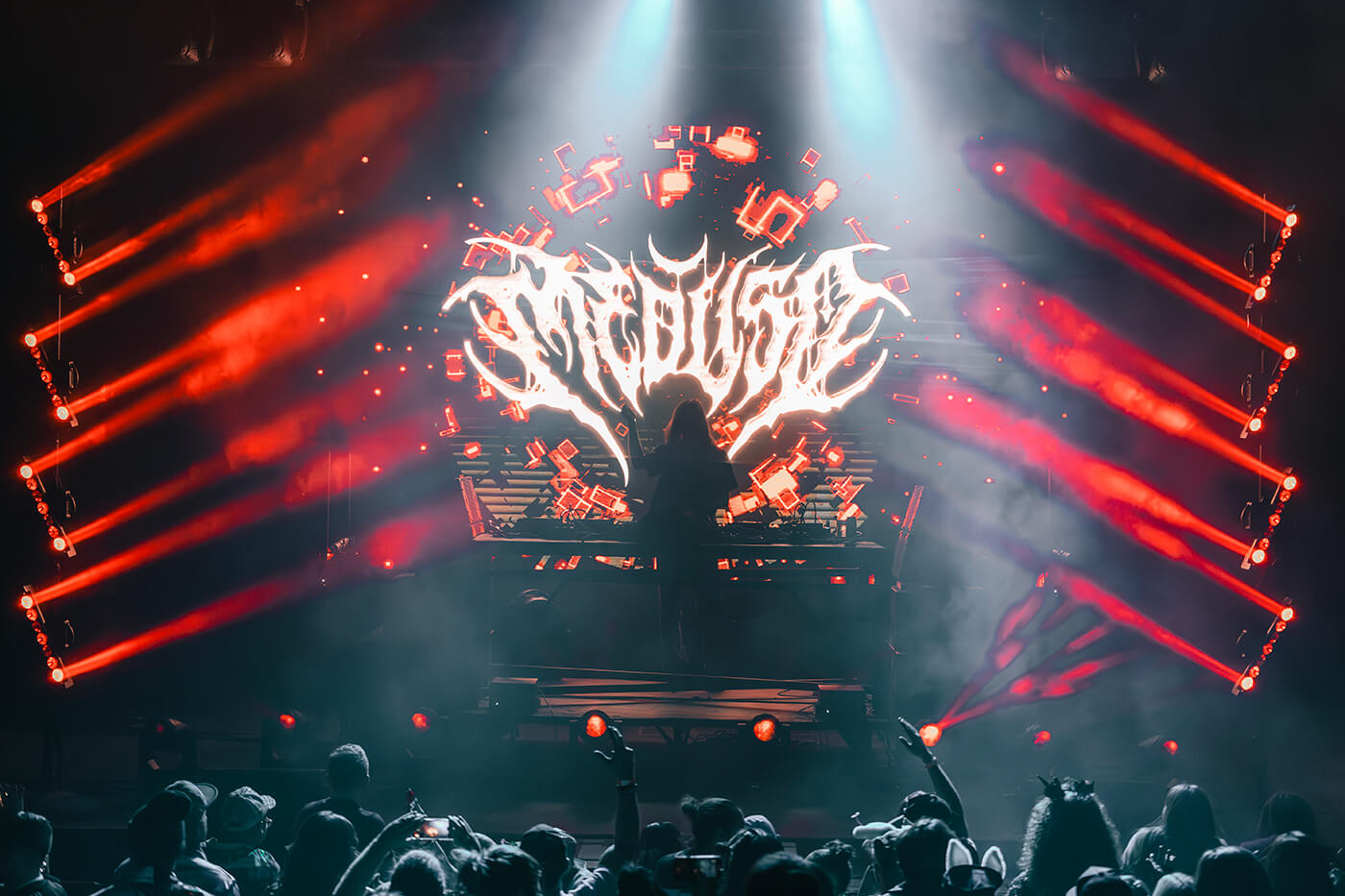
For example, the popular dubstep artist SVDDEN DEATH isn’t working with metal singers. Yet his visual branding features the same gruesome designs as classic metal bands like Lamb Of God and Megadeth.
Meduso — another burgeoning bass artist who’s been using metal sounds in his productions — sees this cultural exchange as more than just a musical trend. He considers the fact that society has endured quite a bit these past few years through COVID-19, various wars, social justice uprisings…
“Culturally, we’re at a moment — maybe politically, economically, stability-wise, global mental health-wise — it feels like people are getting pushed to their limits. That’s when this heavier, angrier music seems to catch on a bit more,” says Meduso. “Everyone’s just trying to put their spin on it.”
Meduso recently put his spin on it via his track Drive You Mad, which opens with rapid-fire distorted guitar strums before falling into a heavy dubstep drop.
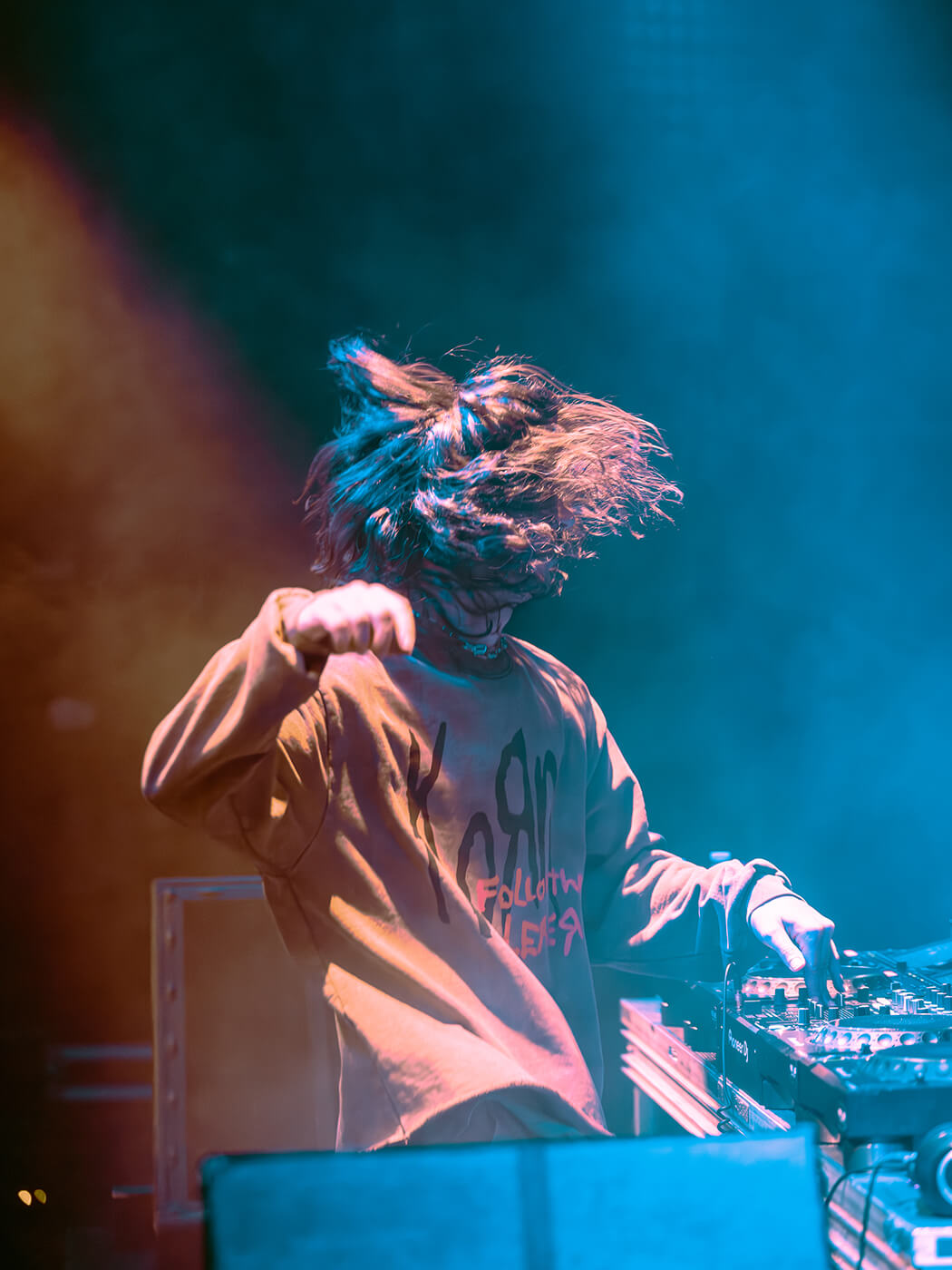
The metal sound is also a staple of Dirtyphonics who, ahead of their new album coming in 2024, have shared multiple singles including the guitar-driven drum ‘n’ bass track, Burbank Nights.
It’s essentially a metal song that borrows the skanking beat attached to drum ‘n’ bass. Every other sound hones more to a metal aesthetic than dance/electronic. The opening is pure metal guitar and then the breakdown flaunts a bass line similar to Spoonman from the alternative metal act Soundgarden.
Dirtyphonics, comprising members Charly Barranger and Julien ‘PitchIn’ Corrales, are adept in this combination because they were both in rock and metal bands long before they started making electronic music back in the mid-00s.
Coming up in France, Barranger and Corrales were inspired by similar groups engaging in this combination. At the time, these groups weren’t necessarily combining the metal and electronic sounds as prominently as Dirtyphonics and Sullivan King, but they were implementing a similar kind of influence and experimentation.

On the electronic side, pioneering French groups Daft Punk and Justice both built their music from rock ’n’ roll. Justice described their sophomore album, Audio, Video, Disco, as a “progressive rock record,” to the French magazine, Tsugi, in 2011.
Then on the live side, Barranger and Corrales consider acts like Pendulum and The Prodigy to be the precursors of everything that is happening today among the metal and electronic crossover.
“[The Prodigy] are punks in their own way and they are a band, and you do have guitars but also DJs,” Barranger says. “It probably made it easier for us to see how we could evolve within the music industry. Still keeping where we were from, but also taking it to another electronic dimension.”
“They showed us the way that rave and metal can meet. Because frankly, when we were full-on into metal it was actually the worst thing ever to see a DJ or another artist play metal or incorporate guitar into electronic music,” Corrales continues. “Now, here we are, doing exactly what we said was bullshit before.”
“When it makes sense and when it’s well done, it always works,” Barranger says.
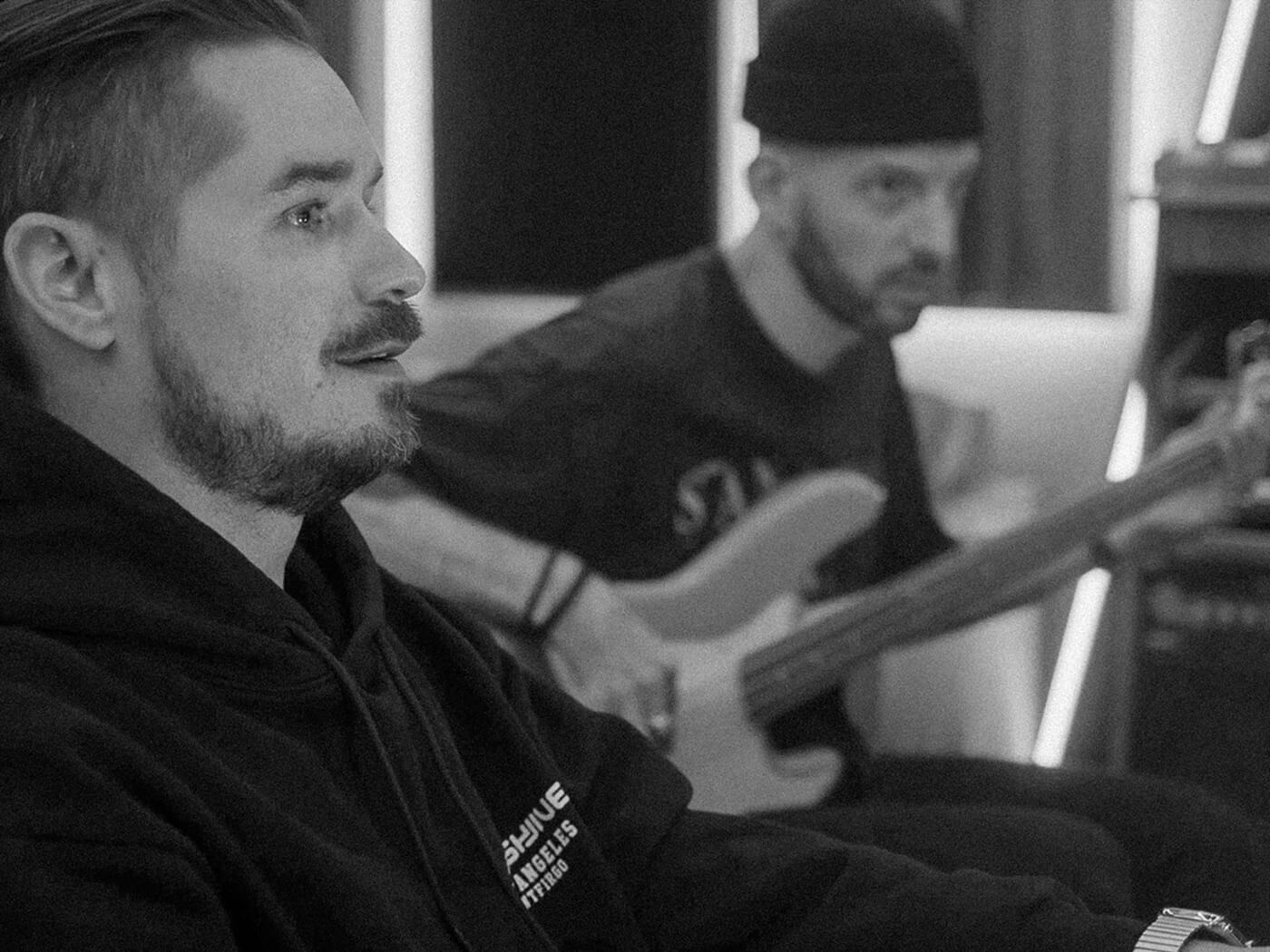
To that point, Barranger and Corrales both acknowledge that finding a way to make that combination work is the biggest challenge. Beyond layering sounds on top of each other without pushing the levels too high, they have to find a way to capture the human feel of playing instruments while matching the loud, intense feel of electronic music.
“When you listen to a metal mix versus a dubstep or drum ‘n’ bass mix, it’s not the same thing at all. Not the same way to compress your stuff. Not the same way to EQ your stuff. So it took us some time, and I guess the quest is never over, to figure out how much of both techniques you want to use,” Barranger says.
Barranger and Corrales often start by recording guitar parts into the DAW to get the feel of the instrument. Then they’ll use plugins and hardware like Positive Grid’s amp and effects processor, BIAS FX, and the pedal and amp modelling processor, HeadRush MX5, to give the guitar the sound and feeling they want within the larger mix.
But they also use these same plugins on synths to give them a more guitar-like character. This helps even out the mix between the two genres. Plus, when they’re recording guitar intros for tracks like Burbank Nights, they’ll remove some of the low-end from the guitar recording and replace it with the low-end of a sub, laying the groundwork for the electronic elements to join the mix more naturally.
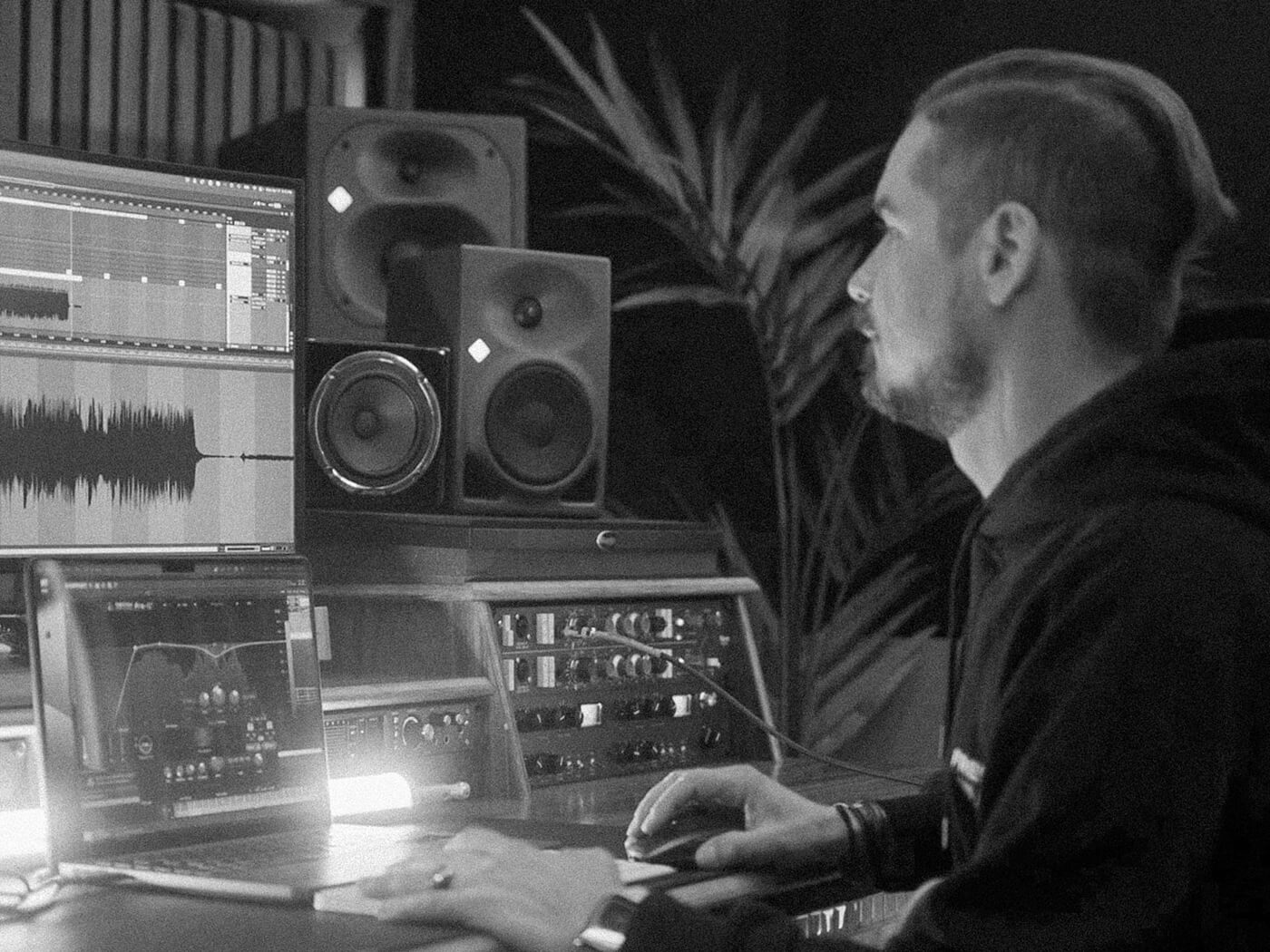
“It’s a big game of EQing and compressing so it feels like the sound is analogue even though it’s layered with a bunch of electronics to give it the massiveness of an electronic song,” Barranger says.
And yet, sometimes, integrating human elements of metal into electronic music requires little to no technological manipulation. When Prescott is recording vocals, he purposefully strips everything back. He wants his vocals to retain as much of that authenticity and rawness as possible, and so he uses very few plugins.
For example, Prescott tuned and affected the vocals on his track Someone Else, from his 2023 album, Thrones of Blood, less than almost every other track in his discography. Currently, that’s the track with the most plays on his Spotify — just shy of 19 million at the time of writing.
“I just think it feels very natural,” Prescott says of Someone Else. “Vocally and performance-wise, I definitely like things being a little more raw and not having a thousand layers. Having simple, very clarity-driven tracks is important to me, and I think that’s something that gets lost in dance music because everything is so quantized. Everything is right on the grid. I’m really making sure for me, personally, that I’m not having that rule that it’s gotta be perfect.”
Prescott engaged with this imperfect approach when he was recording vocals for Vantablack, the title track of his shared metal and electronic EP with Dirtyphonics that came out in 2017. They were working in Barranger’s living room and Prescott wanted to record the vocals right then and there with an old, busted SHURE SM58.
Barranger was hesitant at first. He was open to it, but he was sure they would have to go to their studio and re-record with their condenser mic in a more professional environment.
To that, Prescott only had one thing to say:
“This is rock and roll man, this is how it’s done.” Prescott’s take with the SM58 is the one that ended up on the final release.
“I used to be a firm believer that you always need top-notch equipment,” Barranger says. “It’s never been about the equipment, and it never will be. It helps, but good music is good music.”